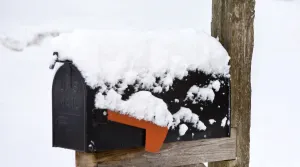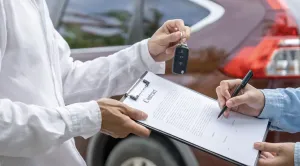Before buying in an HOA community, you need to look closely at several key things. Read through the rules and restrictions, check what you’ll pay each month, and learn about any extra costs that may come up. Make sure you understand what changes you can make to your property and what you can’t. Look into how well the HOA manages its money, how much it has saved up, and how it handles day-to-day business. Find out your rights as a homeowner and what upkeep you’ll be responsible for. Taking time to check all these details helps you decide if HOA living is right for you.
Key Takeaways
- Review HOA’s financial health and reserve funds to ensure stable fees and avoid unexpected special assessments in the future.
- Understand monthly fees, what they cover, and potential increases to accurately budget for homeownership costs.
- Study CC&Rs and architectural guidelines to ensure community rules align with your lifestyle and property modification plans.
- Examine board meeting minutes and management practices to assess community leadership and decision-making transparency.
- Verify maintenance responsibilities and amenity access rules to understand both benefits and limitations of community living.
Understanding HOA Rules and Restrictions
HOA neighborhoods have written rules that tell homeowners what they can and can’t do. These key documents spell out how people should maintain their homes and behave as part of the community. The main rules come in three forms: basic community rules (CC&Rs), operating rules (bylaws), and guidelines about how homes should look.
Anyone thinking about buying in an HOA area needs to read these rules carefully before making a purchase. The rules cover many everyday things like what colors you can paint your house, how to take care of your yard, what pets you can have, and where you can park.
If you break these rules, you might get warnings, have to pay fines, or even face legal trouble. That’s why it’s so important to know and follow the rules when living in an HOA community.
Breaking Down Monthly Fees and Special Assessments
HOA membership requires recurring monthly fees that fund community maintenance, amenities, and vital services according to predetermined payment schedules.
A portion of these fees contributes to the association’s reserve fund, which serves as a financial buffer for major repairs and long-term infrastructure projects.
While regular fees are predictable, homeowners must also prepare for the possibility of special assessments – unexpected charges levied by the HOA board to address emergency repairs or budget shortfalls.
Regular Fee Payment Schedules
Buying a home in an HOA means you’ll need to pay both regular fees and possible extra charges.
Most HOAs ask for monthly payments, while others collect them every three months or once a year. Owners can pay using bank transfers, websites, or checks before the due date.
If you pay late, you’ll face fines that get bigger over time. The HOA might even put a legal claim on your home.
Knowing when to pay, how to pay, and what happens if you don’t pay helps you stay in good shape with your HOA and avoid money troubles.
Reserve Fund Planning
Reserve fund planning helps HOAs manage money for both current needs and future repairs.
There are two main ways HOAs collect money from homeowners: monthly fees and one-time special payments.
- Monthly fees pay for daily upkeep and save money for bigger projects down the road.
- Special payments help cover surprise repairs or big updates when saved money isn’t enough.
- Expert studies look at how long things last, what they cost to replace, and rising prices to figure out how much money to save.
Good HOAs keep enough money saved up to take care of their property and avoid putting too much strain on homeowners’ wallets by planning ahead and checking their funds often.
Emergency Assessment Risks
Living in an HOA community comes with money risks, mainly due to emergency fees that can greatly affect homeowners’ wallets. HOAs need to check their savings regularly to plan for possible emergencies, but unexpected events may still require extra money.
| Fee Type | Cost Level | Common Causes |
| Small Emergency | Low (<$1000) | Storm Damage |
| Big Repair | Medium ($1000-5000) | System Breakdowns |
| Worst-Case | High (>$5000) | Natural Disasters |
Homeowners should look at their HOA’s emergency plans and keep some money saved for possible fees. Knowing these risks before buying helps make better choices and plan money matters wisely.
Evaluating the HOA’s Financial Health
A thorough evaluation of an HOA’s financial health requires examination of three critical components: reserve fund adequacy, annual budget performance, and existing debt obligations.
The reserve fund status indicates the association’s preparedness for major repairs and replacements, while analysis of the annual budget reveals operational efficiency and fiscal discipline.
Assessment of outstanding debts, including any liens or pending litigation, provides insight into potential financial risks and future special assessments that could impact homeowners.
Reserve Fund Status
A healthy reserve fund shows how well an HOA manages its money and plans for the future. Before buying a home, look closely at how much goes into the reserve fund and how it’s being used. This helps you know if the community has enough money saved for big repairs and updates that will be needed later.
- Check the reserve study to make sure there’s enough money set aside for expected repairs.
- Look at current savings compared to what experts recommend (usually 70% or more).
- Look for any history of extra fees charged to homeowners, which might mean the reserves are too low.
When a community keeps its reserve fund strong, it takes good care of residents’ money and helps keep home values stable.
Annual Budget Analysis
Looking at an HOA’s yearly budget helps show if it’s healthy and well-run. A careful look shows how money is spent on key needs like upkeep, power and water bills, insurance, and day-to-day costs.
Anyone thinking of buying should check money records to make sure the HOA is open about its spending and brings in enough money to pay its bills without often asking owners for extra funds.
Important things to check are how spending compares to money coming in, how much yearly fees go up, and how many owners are behind on payments.
These money details help buyers see if the HOA is well-managed and likely to stay strong in the future.
Outstanding Debt Assessment
Looking at how much money an HOA owes helps show if it’s in good financial shape and what risks buyers might face.
A careful look at the numbers helps residents know what they might need to pay and how healthy the HOA’s money situation is.
- Check any loans, like those for shared spaces or fixing up the neighborhood.
- Look at who hasn’t paid their fees, which can hurt the HOA’s savings.
- Check any ongoing court cases or deals that might lead to extra fees.
When buyers know about these money matters, they can better decide if they want to join the community and protect their investment.
Pay close attention to how much debt there is compared to income, and how the HOA plans to pay it back.
Reviewing the CC&Rs (Covenants, Conditions & Restrictions)
Reading through the community rules, known as CC&Rs, is a key step when buying a home in an HOA neighborhood. These rules spell out what homeowners can and can’t do, from house colors to yard work rules.
Buyers need to look closely at what changes they can make to their property and what special cases might allow breaking normal rules.
The CC&Rs list building rules, upkeep duties, and limits on how you can use your property – all of which affect your daily life there. Taking time to read these rules helps make sure the community’s way of doing things matches how you want to live.
Examining Property Maintenance Requirements
Living in a community with an HOA means following clear rules about keeping your property looking good, which helps protect home values in the neighborhood.
As a homeowner, you need to know and understand the rules about taking care of your home’s outside areas, your yard, and when to do regular upkeep.
- Regular checks of your home’s outside make sure you follow rules about paint colors, roof care, and any changes to how your house looks.
- Yard care rules tell you which plants you can use, how often to cut your grass, and what decorations you can put up during holidays.
- Upkeep timing lets you know when to fix things, treat for bugs, and clean up after each season.
When you follow these rules, you help keep good relationships with neighbors while making sure your neighborhood stays attractive and valuable.
Analyzing Amenities and Common Areas
HOA communities typically offer a range of shared amenities and facilities, from swimming pools and fitness centers to parks and clubhouses, which can enhance residents’ quality of life.
Access to these common areas is governed by specific rules and schedules established by the homeowners association to guarantee fair usage and maintain security.
The HOA assumes responsibility for the upkeep of these shared spaces through regular maintenance, repairs, and periodic upgrades funded by membership dues.
Available Facilities and Services
Homeowners associations (HOAs) offer many shared facilities that help keep home values high and make life better for residents. These typically include swimming pools, exercise rooms, community buildings, and places for neighborhood gatherings.
- Fun and fitness spots like tennis courts, walking paths, play areas, and sports fields
- Safety features such as controlled entry gates, security cameras, and guard patrols
- Upkeep services including lawn care, snow clearing, and general area maintenance
The HOA keeps these facilities running through regular fees from homeowners. This ensures everything stays in good shape and ready for all residents to use while keeping the neighborhood nice and working well.
Maintenance and Access Rules
Shared spaces make community life better, but we need rules to keep them running well and fair for everyone who lives here. Clear guidelines help keep everything in good shape and looking nice, which helps protect home values.
| Area | Main Rules |
| Pool | When you can swim, how many guests allowed |
| Clubhouse | Book ahead, pay deposit |
| Landscaping | Which plants okay, how tall they can grow |
| Common Areas | When to use, noise rules |
| Parking | Where to park, guest passes |
When residents know these rules, they can better use shared spaces and follow the right steps for landscaping and parking. This helps keep the whole community running smoothly.
Investigating the HOA Board and Management
When buying a home in an HOA community, make sure to look closely at who runs it and how they manage things.
Learning about the board members and how they work with residents will tell you a lot about life in that community.
- Get and read the past year’s meeting notes to see how they handle decisions and solve problems.
- Check how well the management company does its job, including how fast they respond and how they handle money.
- Talk to board members about what they want for the community, what they’re working on, and how they deal with resident issues.
Taking these steps helps you make sure the HOA’s way of doing things matches what you’re looking for.
Understanding Your Voting Rights and Responsibilities
HOAs give homeowners the right to vote on big community choices, pick board members, and change community rules. Each owner should learn how voting works, including ways to vote through someone else and how many people must vote for decisions to count.
Going to HOA meetings helps owners keep up with what’s happening and use their votes wisely. These meetings cover yearly money plans, rule changes, and choosing who runs the community.
When owners know their rights and duties, they can both protect their homes and help make good choices for everyone.
Assessing Architectural Control Guidelines
HOA communities set clear rules about how homes in the neighborhood should look from the outside.
These rules cover changes to homes, new additions, and design choices. While homeowners have some freedom to make design choices, they must follow basic standards that help keep all homes looking good together. Following these rules helps protect home values and keeps the neighborhood looking nice.
- Learn how to submit requests to the Architectural Review Committee (ARC) and how long approvals take
- Check what building materials you can use, which colors are allowed, what plants you can grow, and how buildings should be built
- Find out what rules apply to common changes like putting up fences, adding solar panels, installing satellite dishes, and painting your house
Researching HOA Violation Policies and Enforcement
Living in an HOA community means knowing how rule-breaking is handled. Before buying a home, it’s smart to check how the HOA deals with violations and makes sure rules are followed.
| Violation Part | What to Look For |
| Warning Time | How long you have to fix the problem |
| Fines | How much you pay for breaking rules |
| Fighting Back | How to challenge a violation |
| Record Keeping | What proof is needed |
| Taking Action | Steps taken when rules are broken |
Owners need to look at how violations are tracked, how quickly they must be fixed, and what happens if someone doesn’t follow the rules. Knowing these rules helps avoid problems later and makes sure you’re okay with how the community runs.
Frequently Asked Questions
Can I Rent Out My Property in an HOA Community?
Most HOA neighborhoods let you rent out your home, but they come with rules about who can rent, how long they can stay, and what steps you need to take first. Before renting your property, make sure to check your HOA’s rules and paperwork to know exactly what’s allowed.
How Long Does the HOA Approval Process Typically Take for Buyers?
The HOA usually takes between 15-45 days to approve new buyers. During this time, they check the buyer’s paperwork, run background checks, look at their money situation, and have the board make a final decision. How fast it moves depends on whether buyers turn in all needed papers quickly and meet the HOA’s basic rules.
What Happens if the Previous Owner Had Unpaid HOA Fees?
If a previous owner didn’t pay their HOA fees, these debts usually stick to the property when it changes hands. Most home sale agreements make the seller pay off any overdue HOA charges before the sale goes through, which helps keep the new buyer safe from old debts.
Are There Age Restrictions for Residents in This HOA Community?
Many HOAs have rules about how old residents must be, especially in communities meant for seniors aged 55 and up. These places often have special features just for older adults. By law, these communities must make sure a set number of their residents meet the age rules.
How Often Do HOA Communities Typically Have Board Member Elections?
HOA boards usually pick new members once a year, but some wait two or three years between votes. Owners who can vote help choose the people who will run their community.
Conclusion
Purchasing property within an HOA community requires careful research and understanding of key factors. Our team at Ace California Law recommends buyers to check monthly fees, community rules, and how the association is run. You’ll need to review important documents like CC&Rs, look into maintenance obligations, and check if the HOA is financially stable. Before buying, make sure the community’s rules match your lifestyle, as HOA living comes with specific guidelines and restrictions. Take time to read all documents and understand what’s expected of homeowners in the community.






